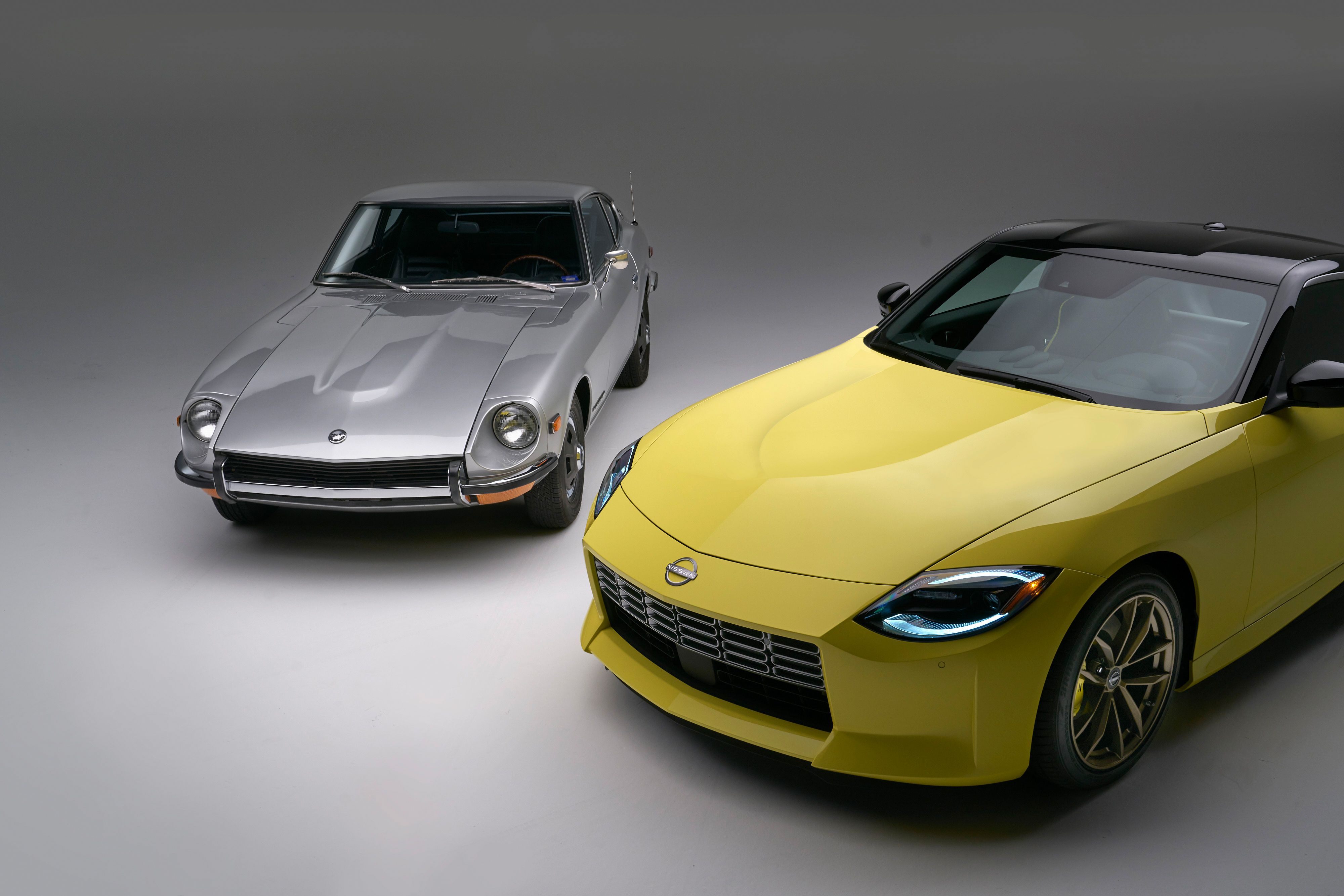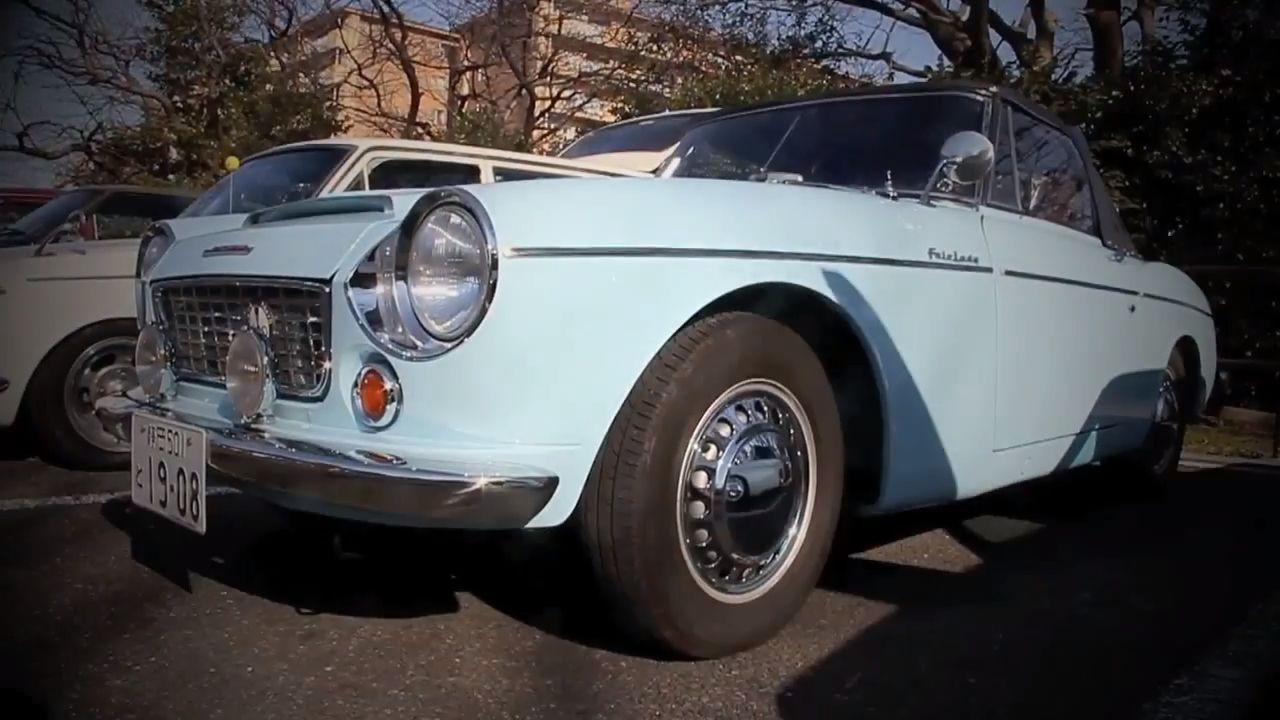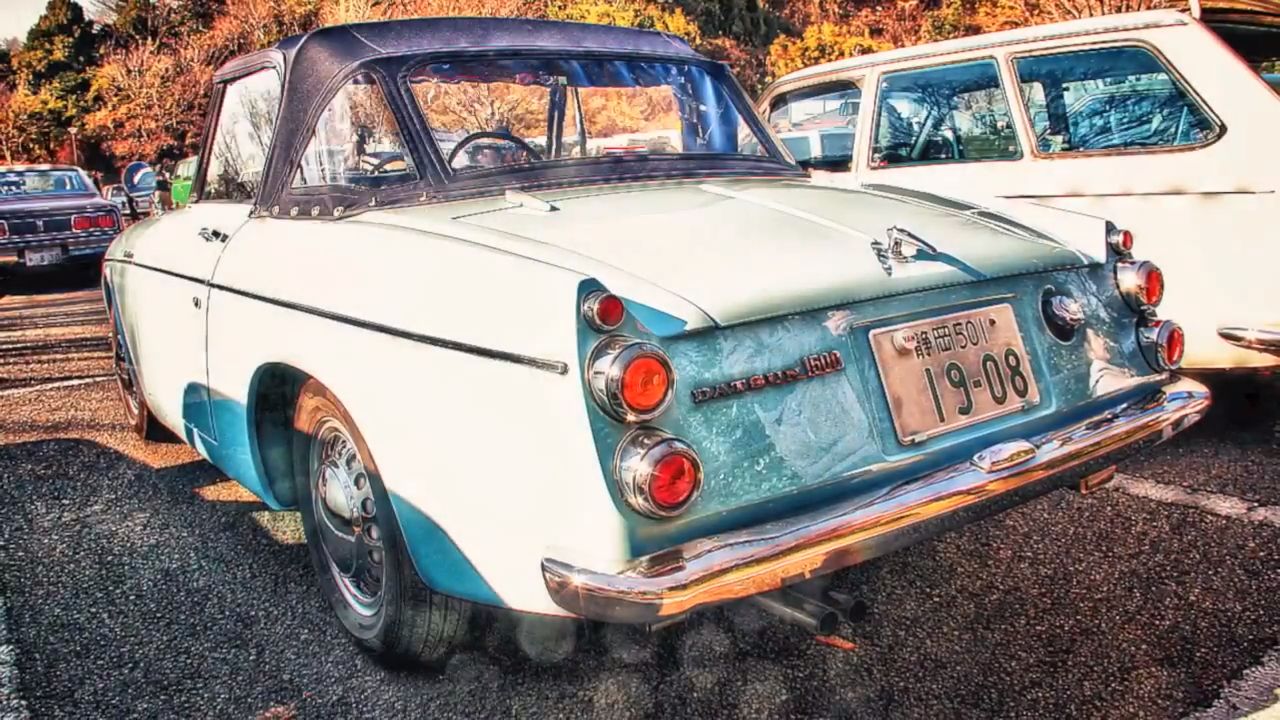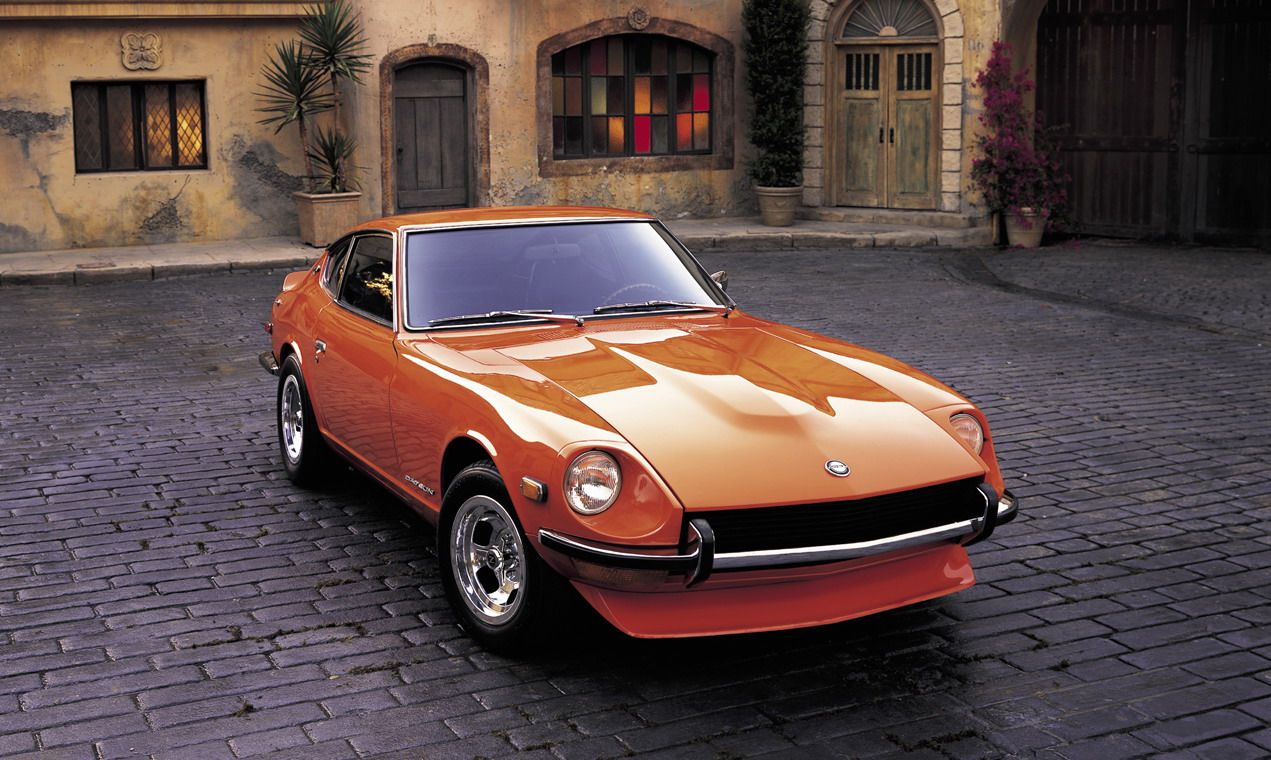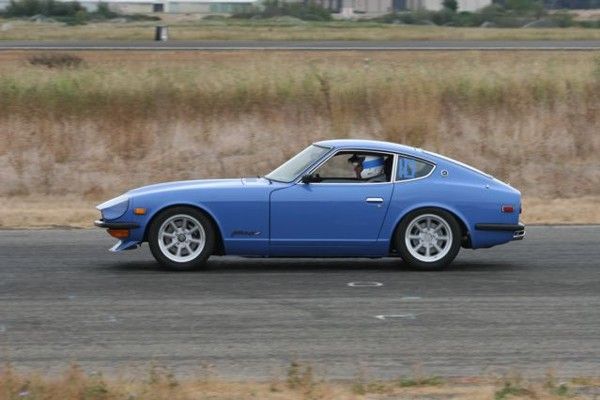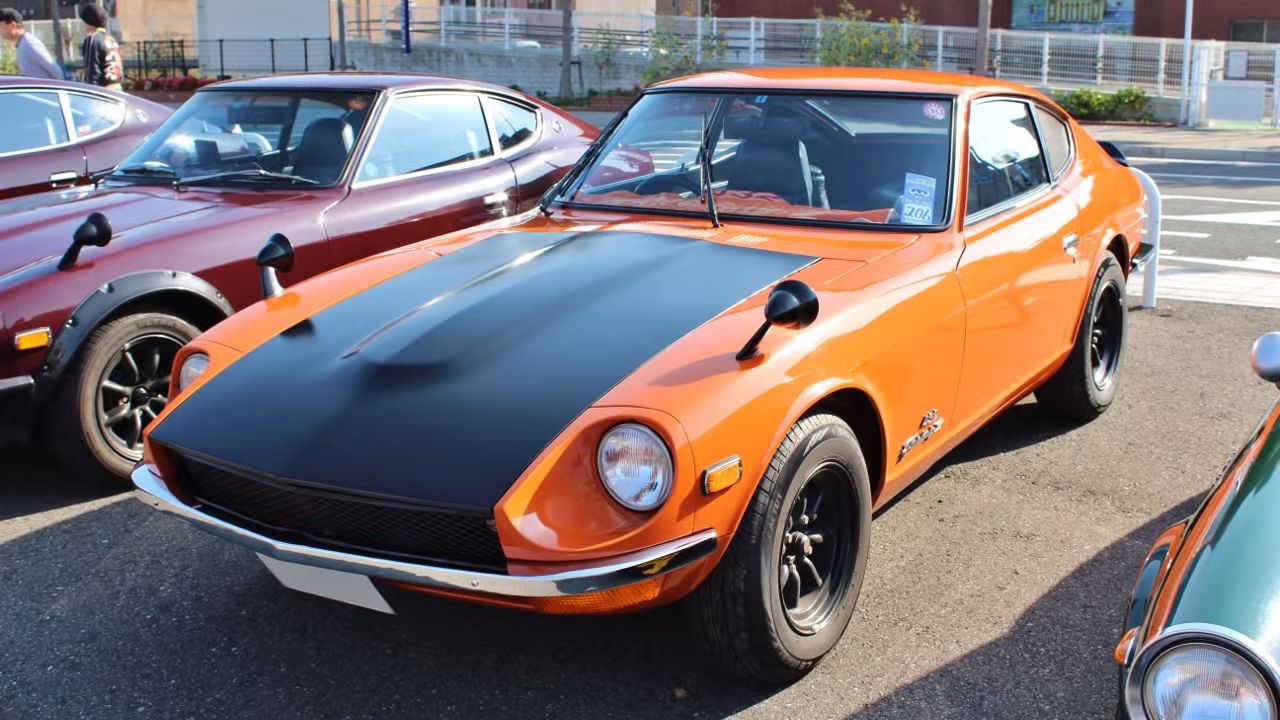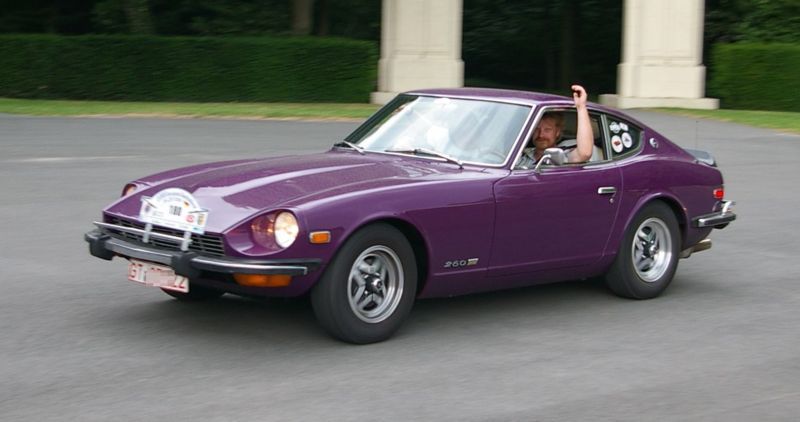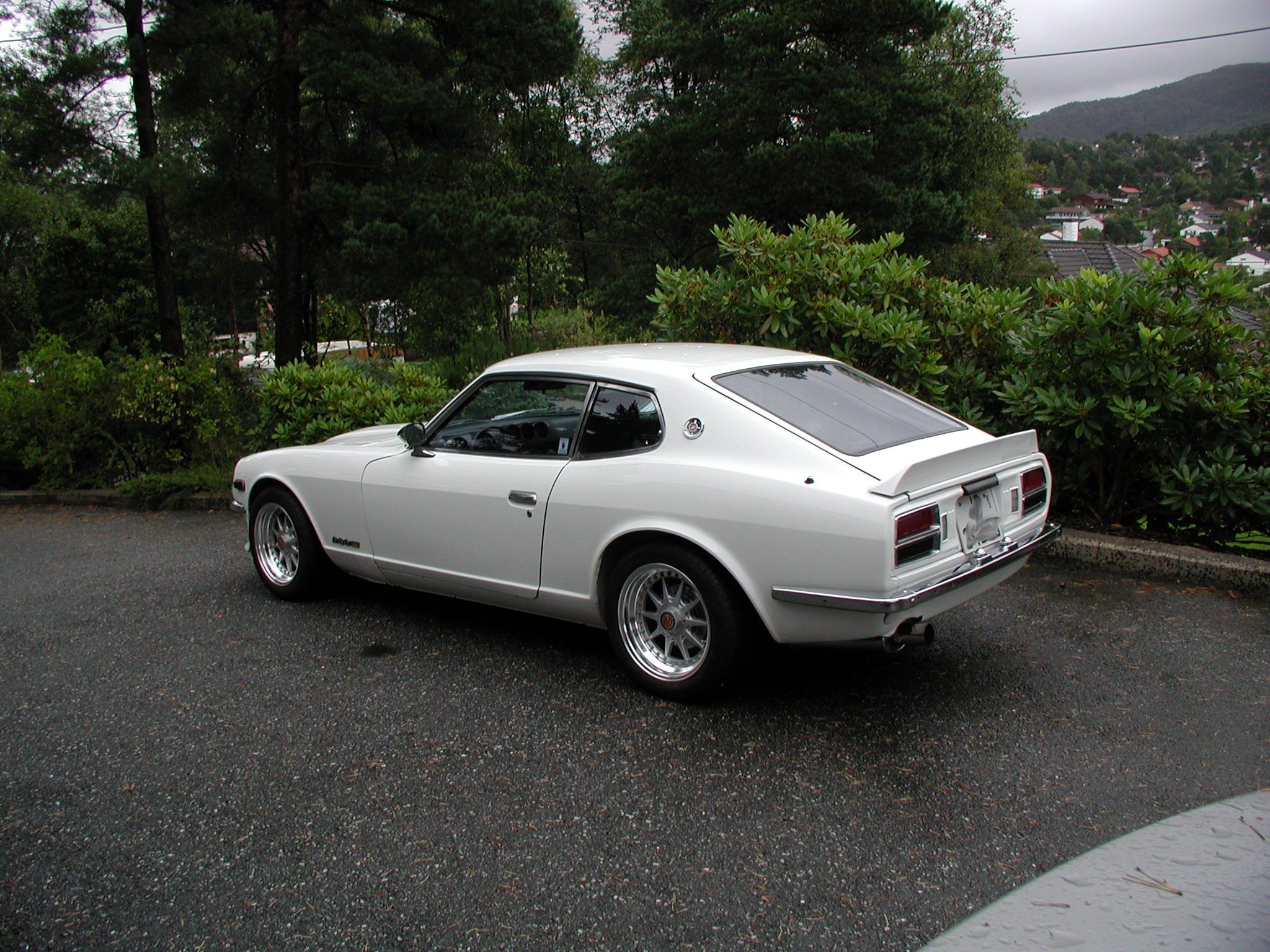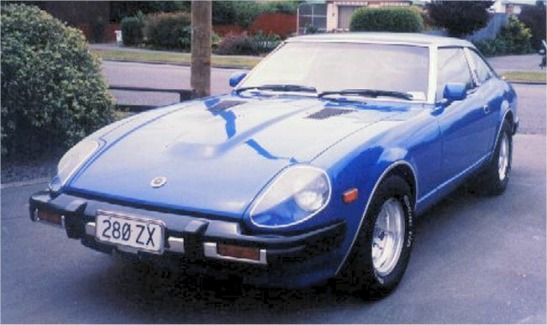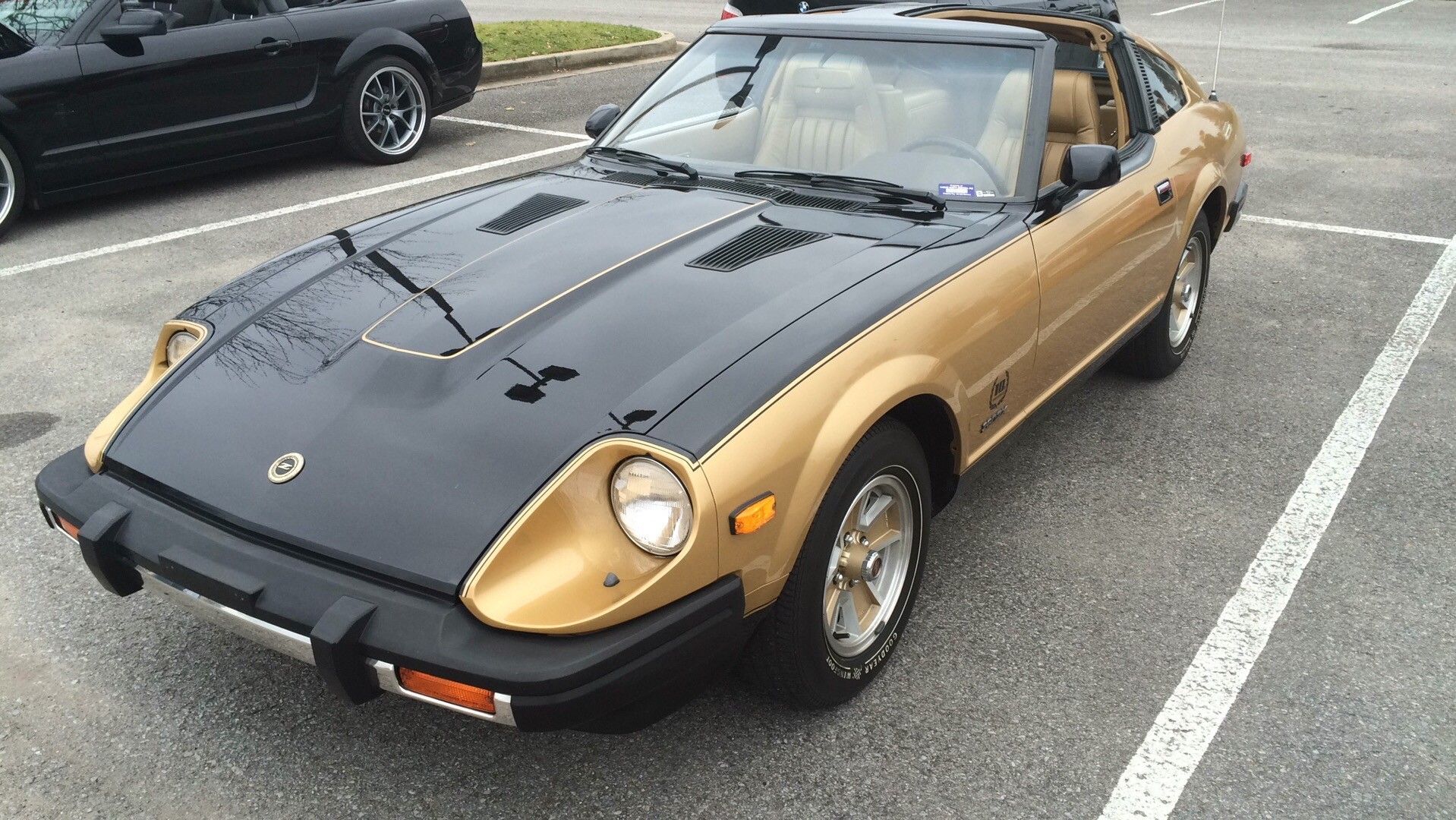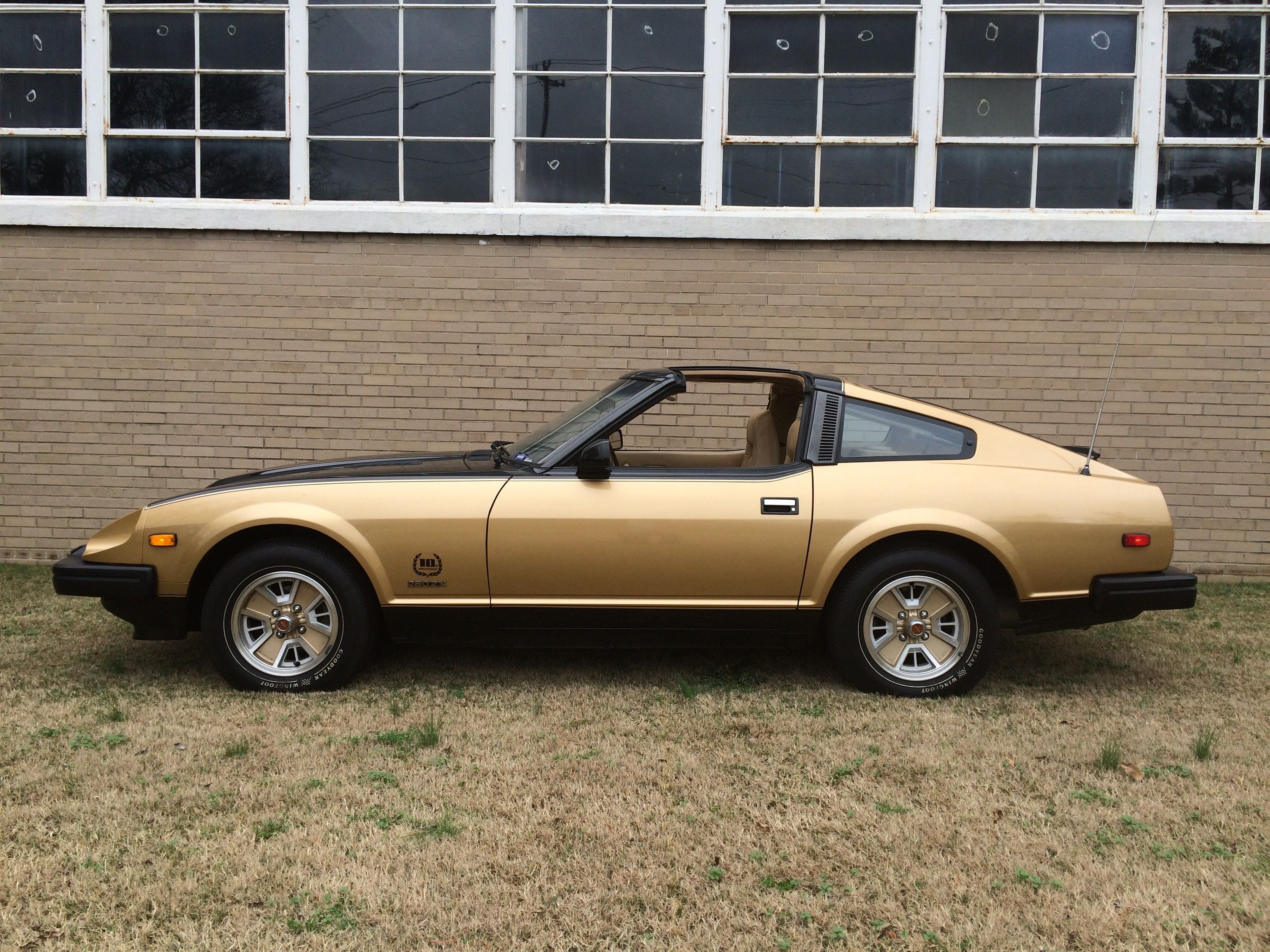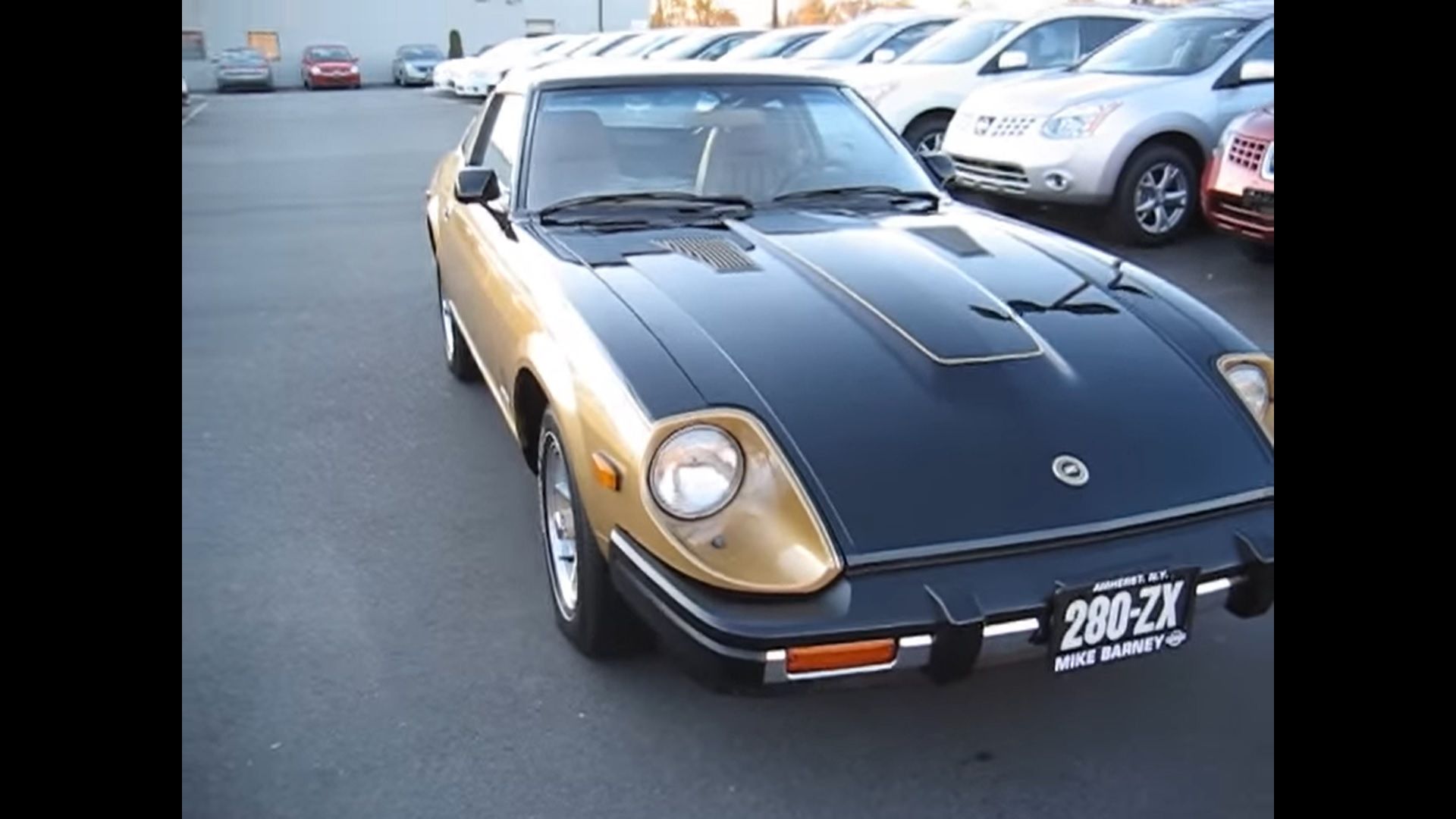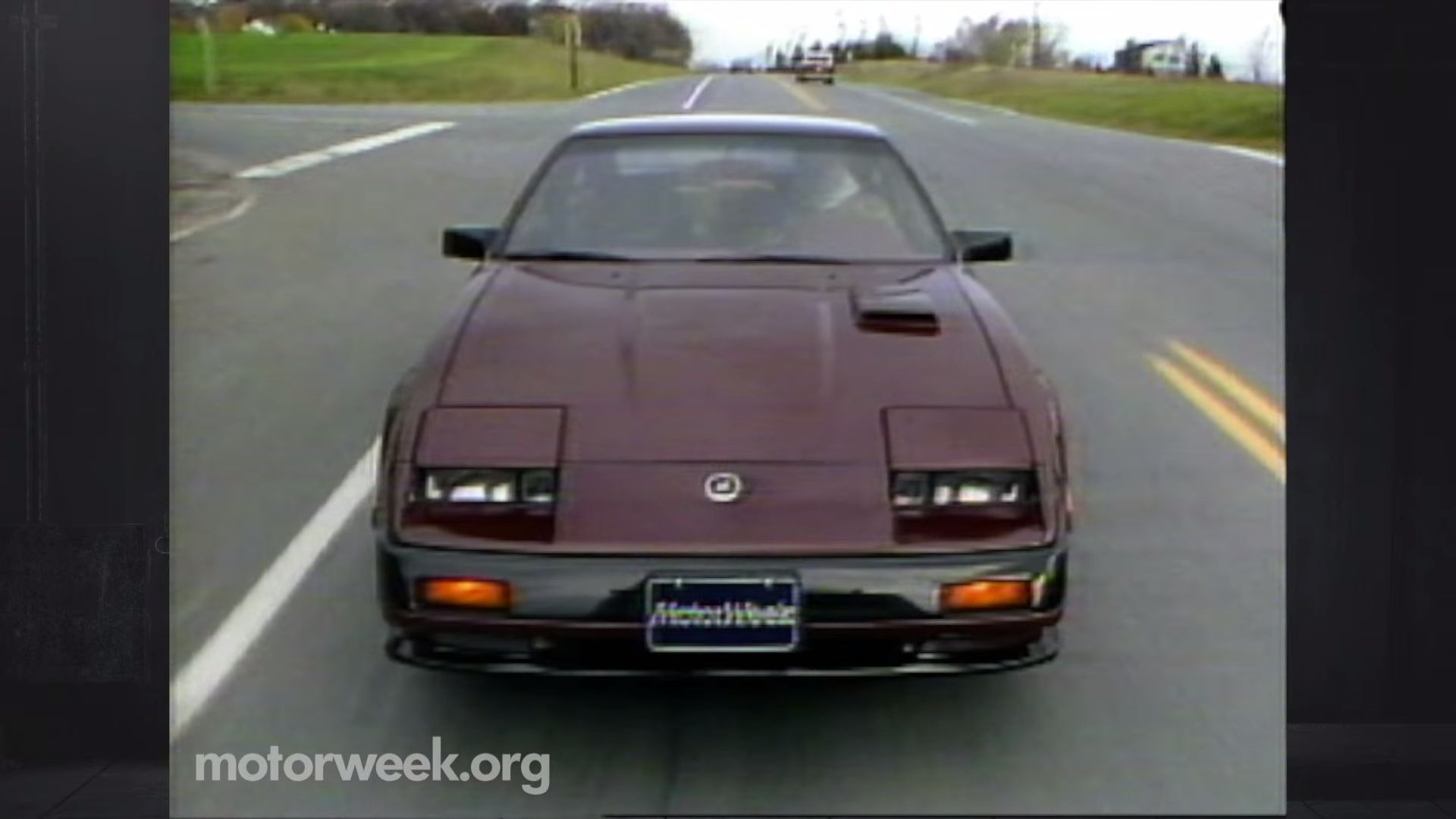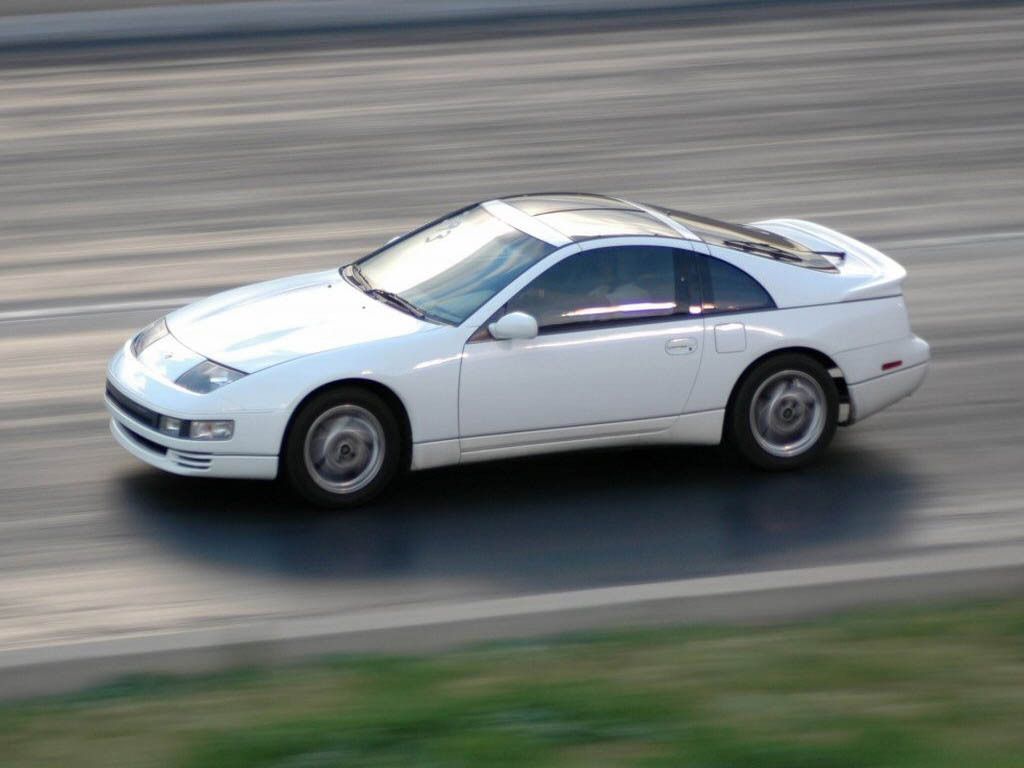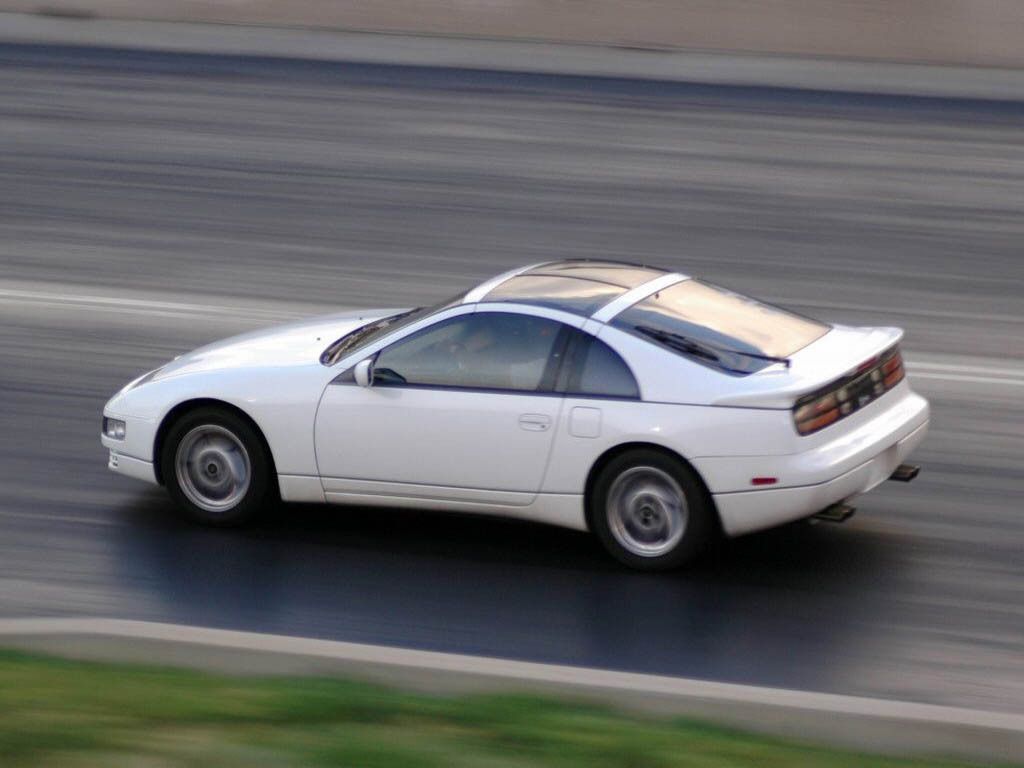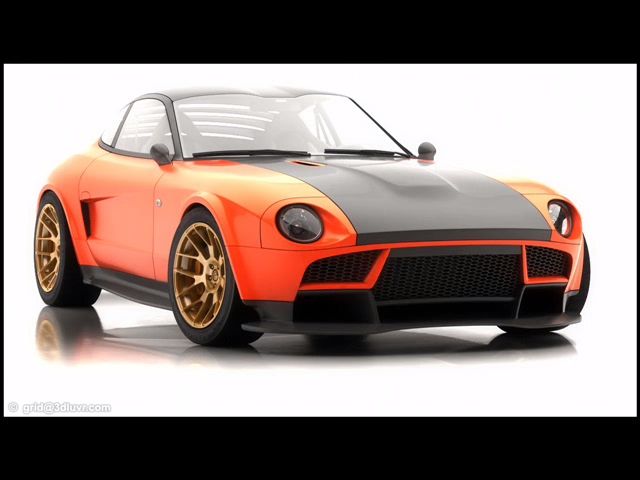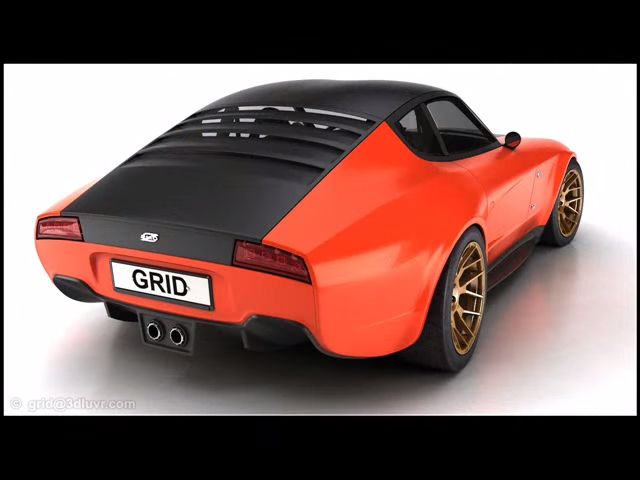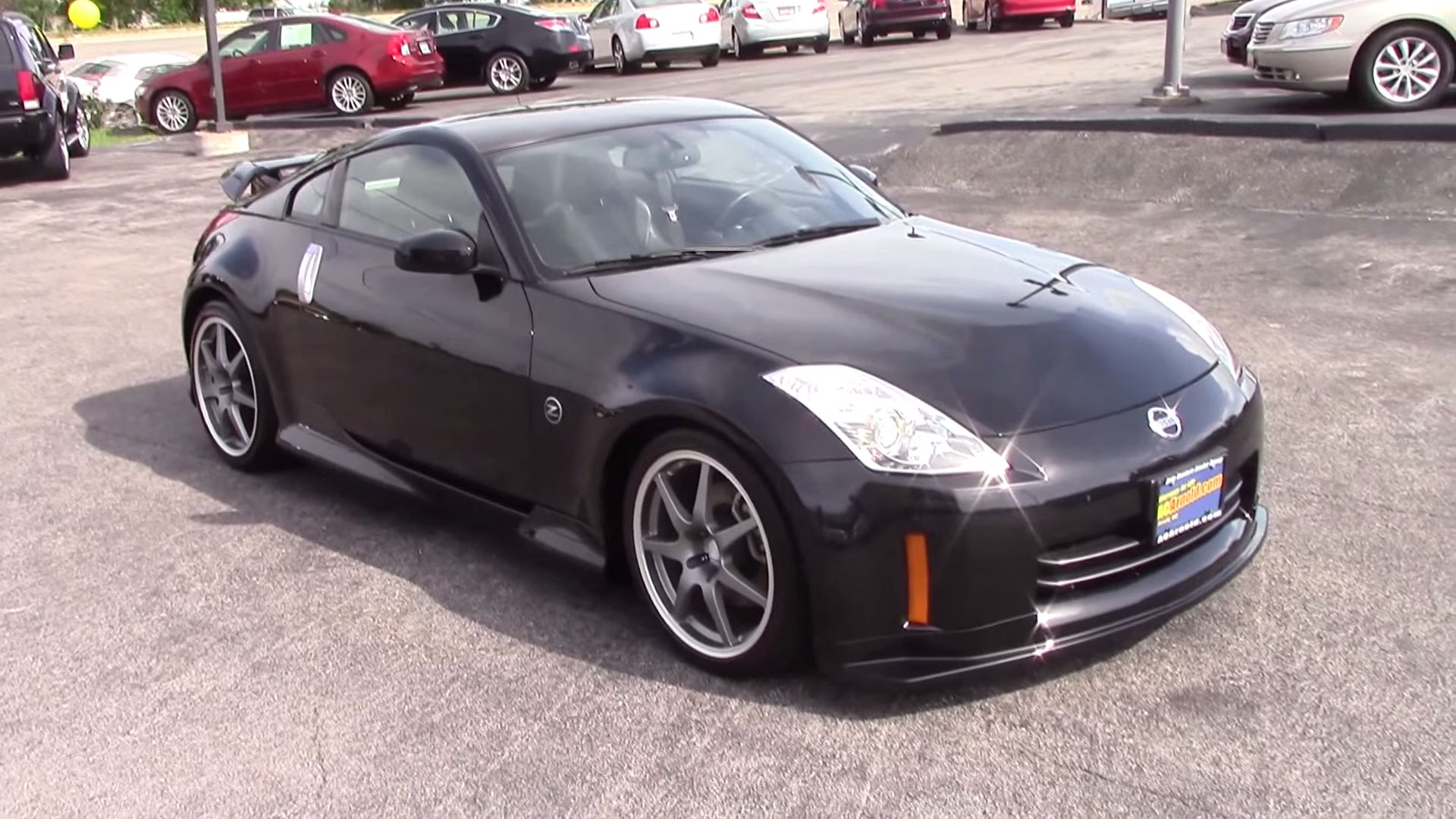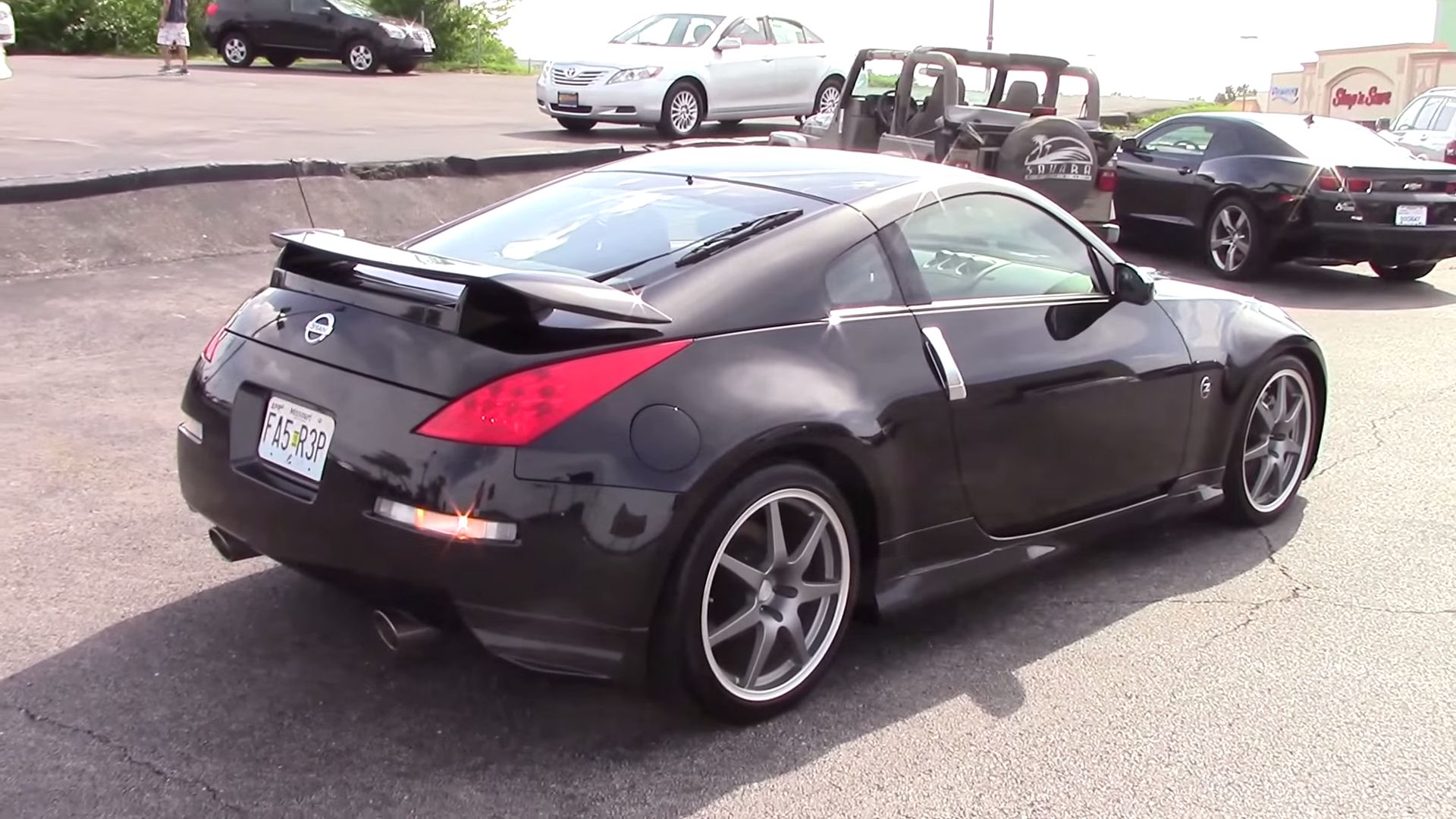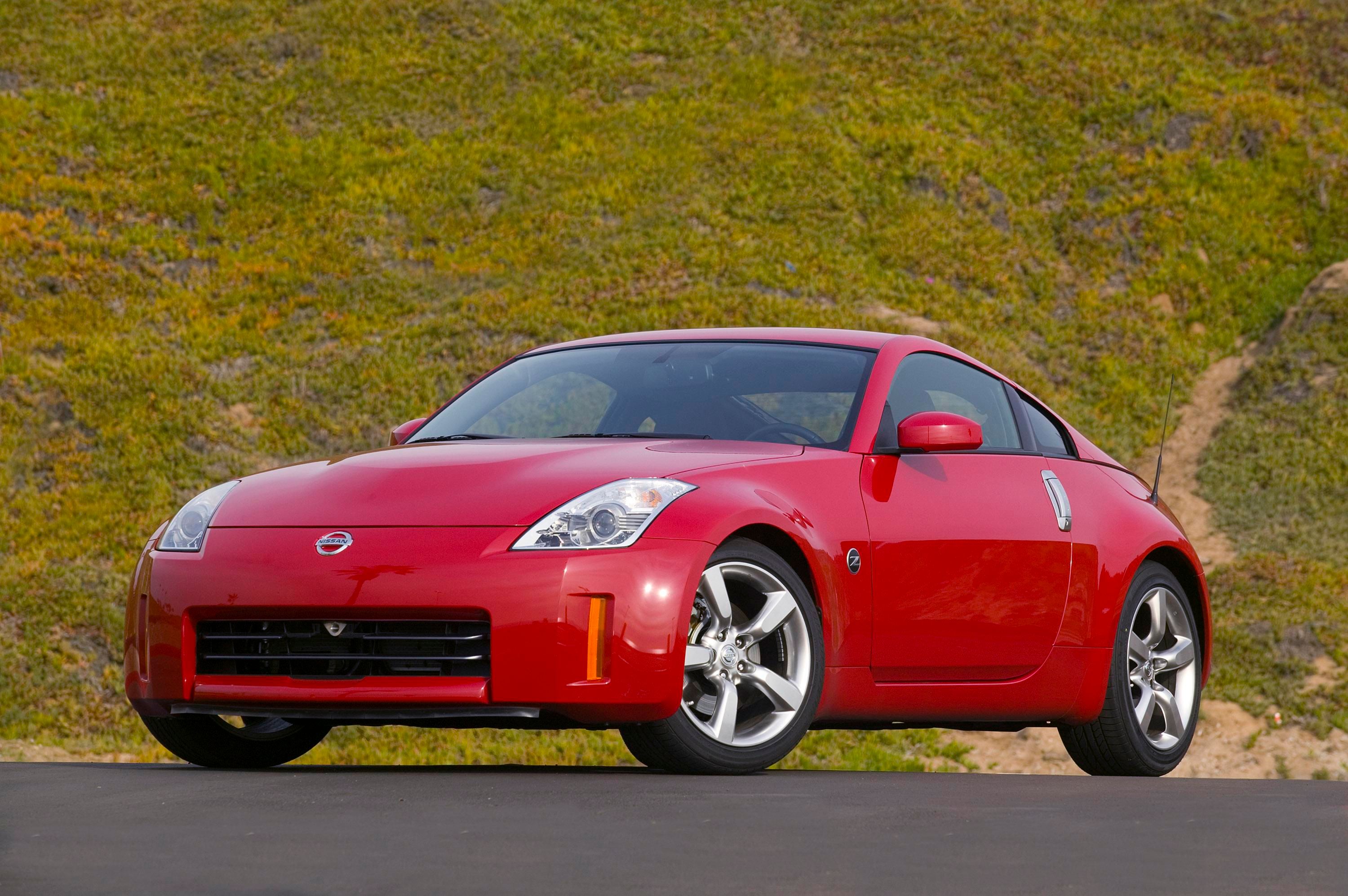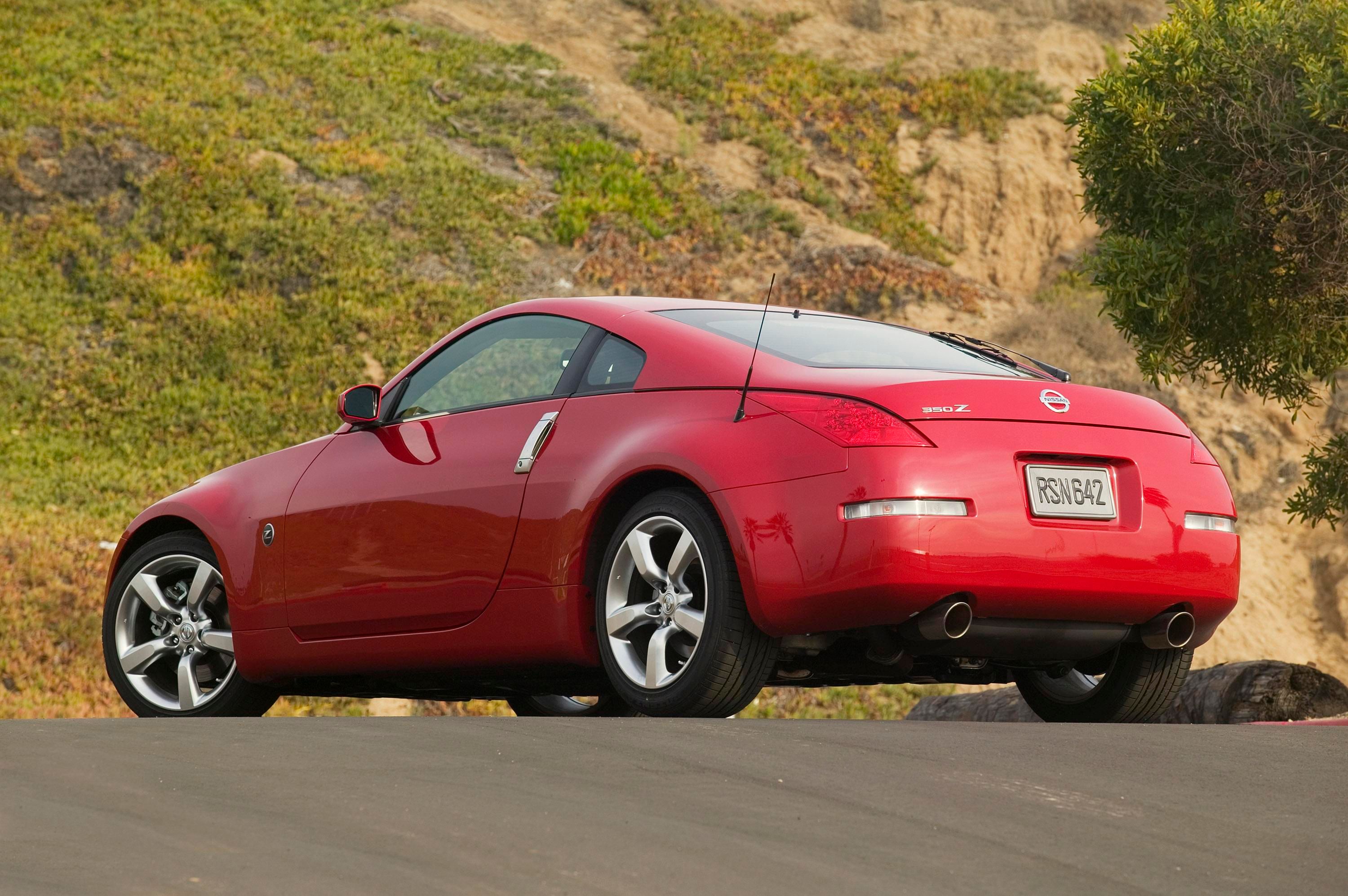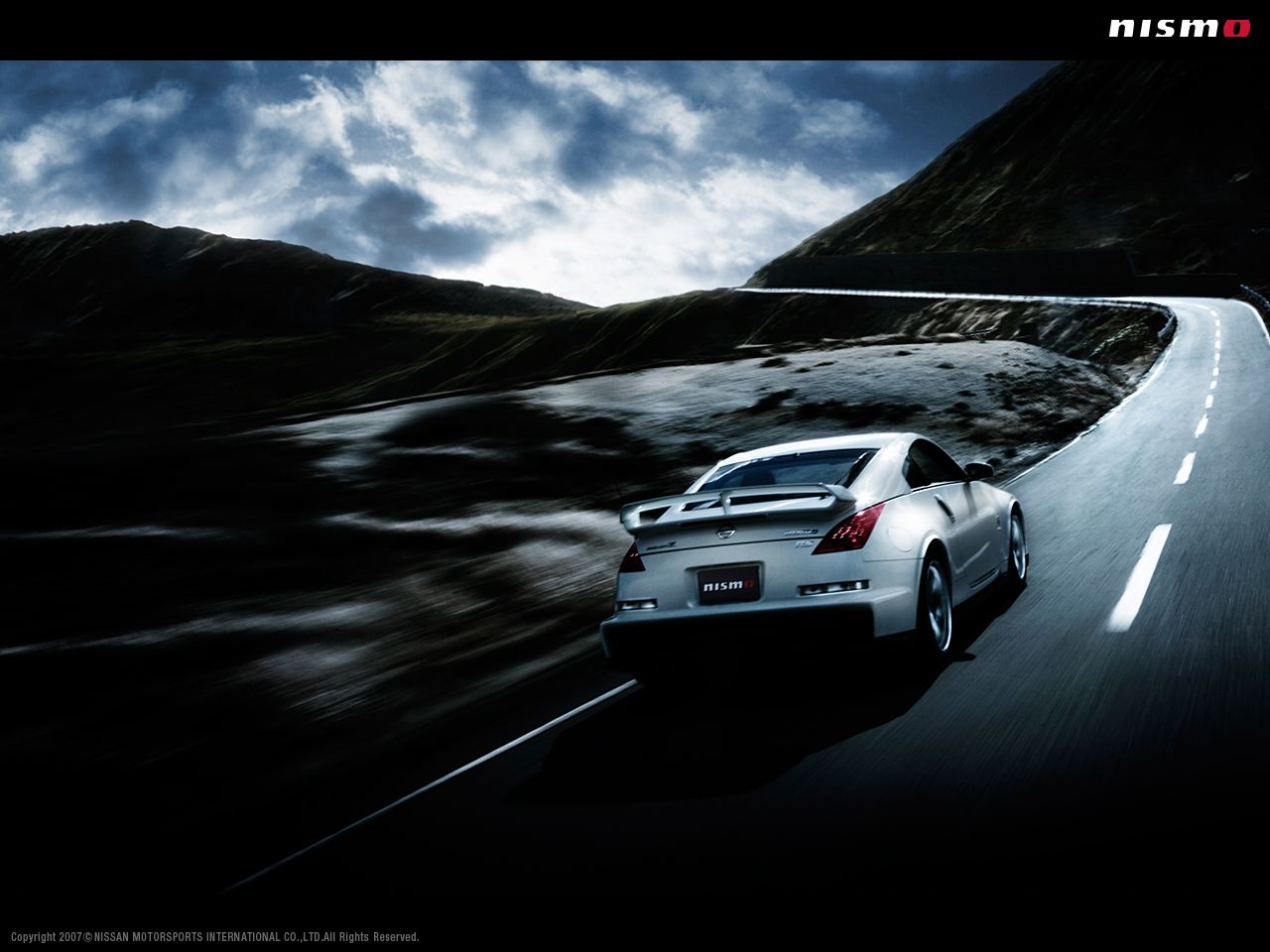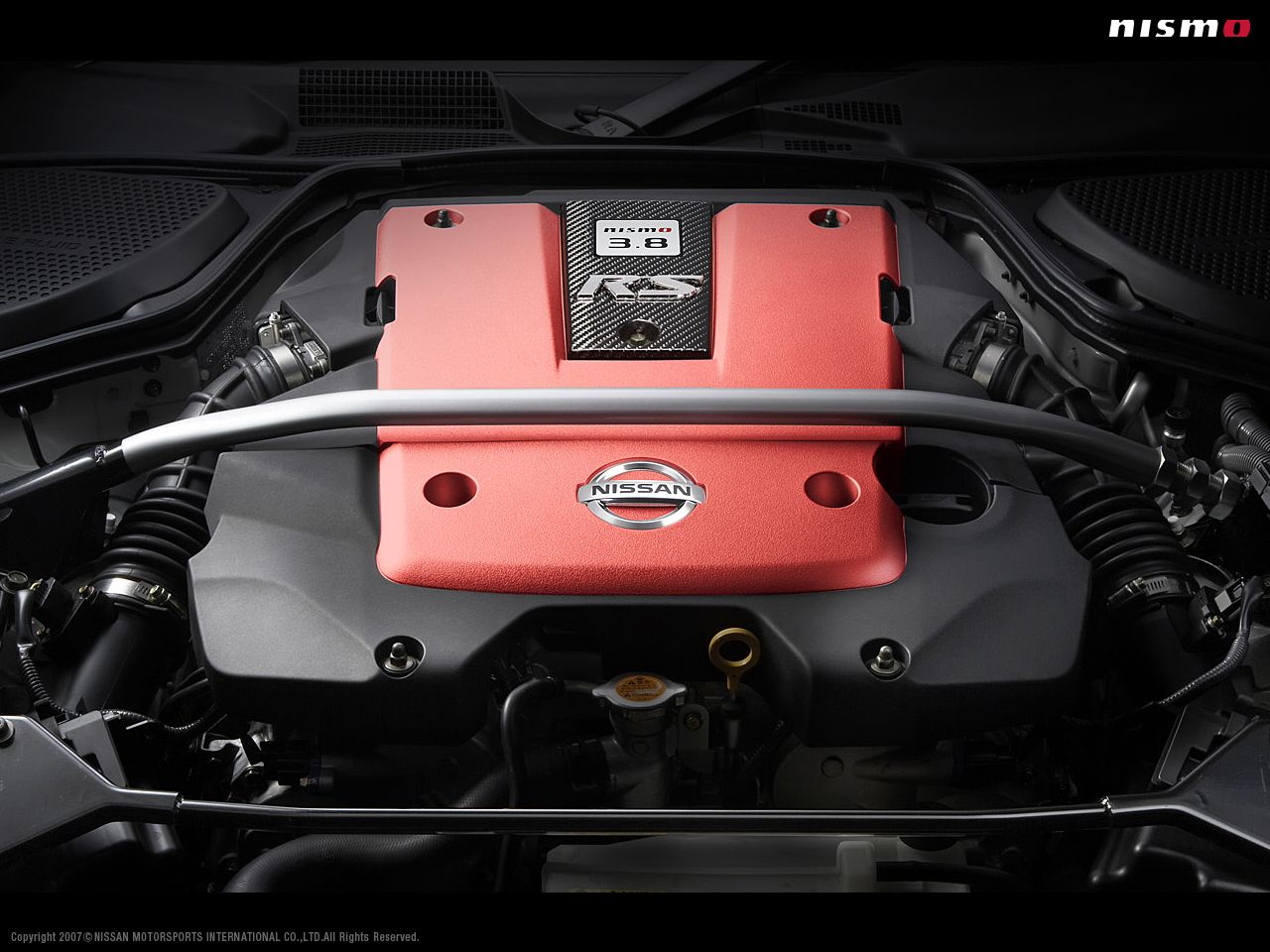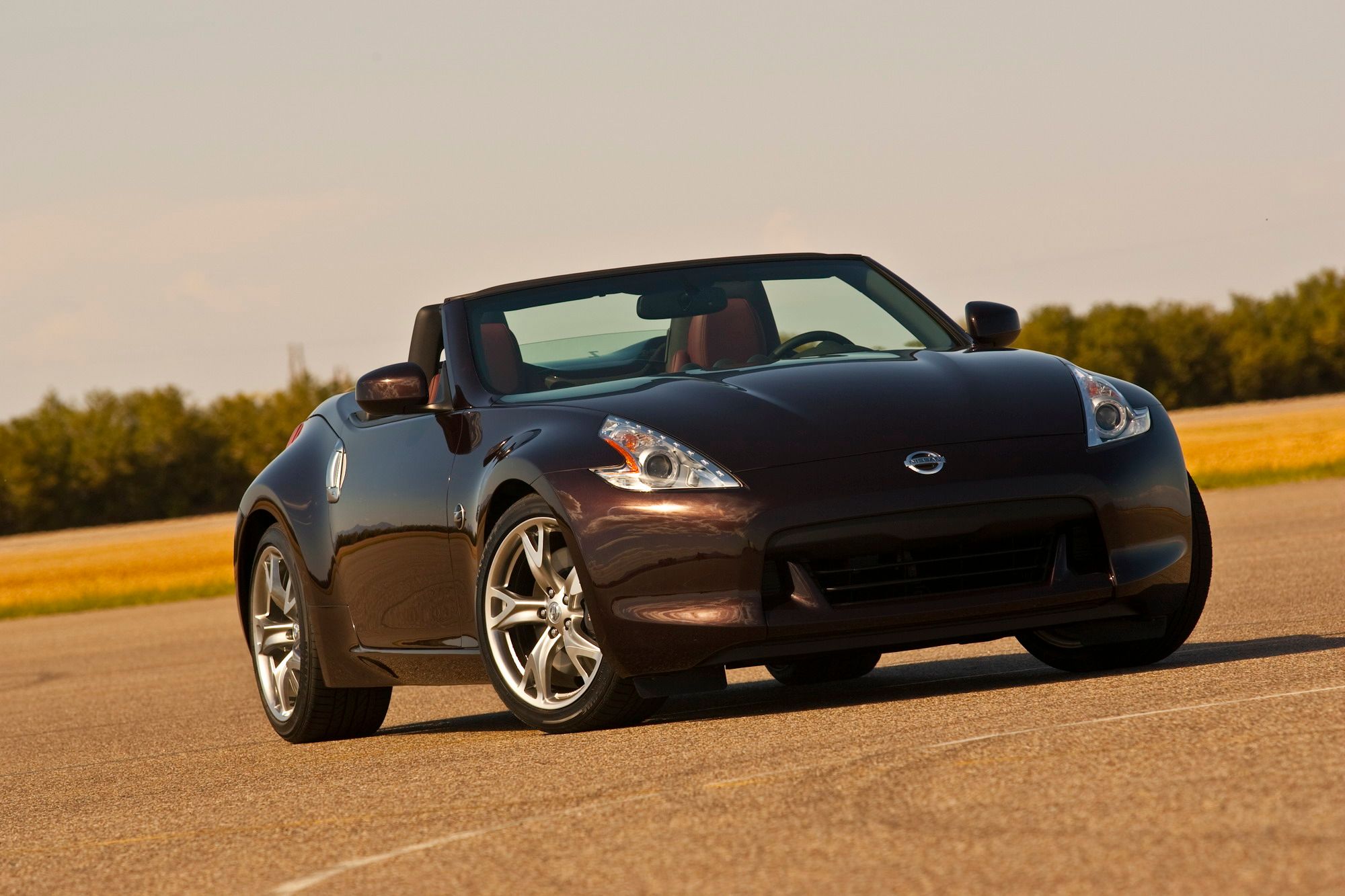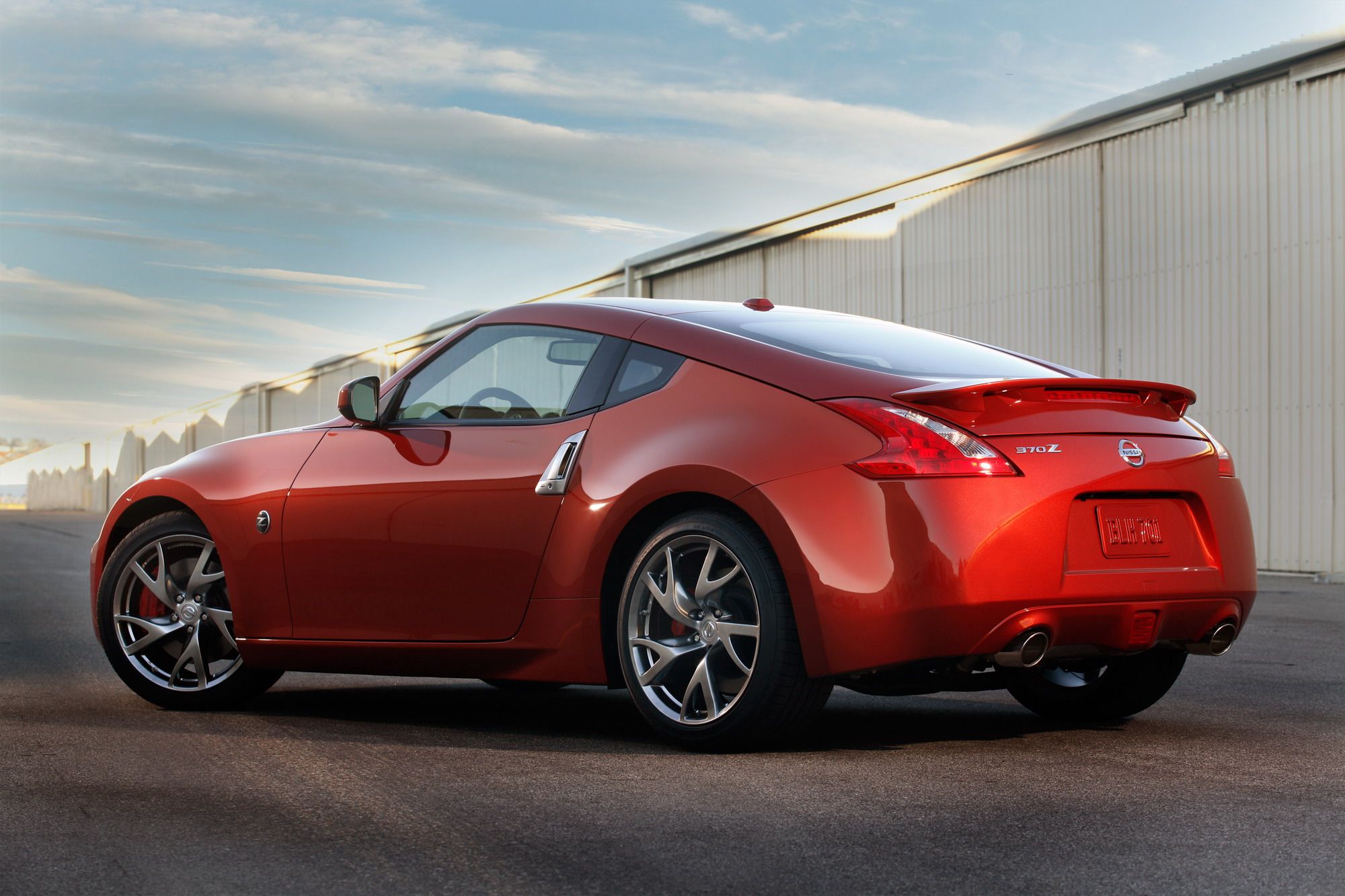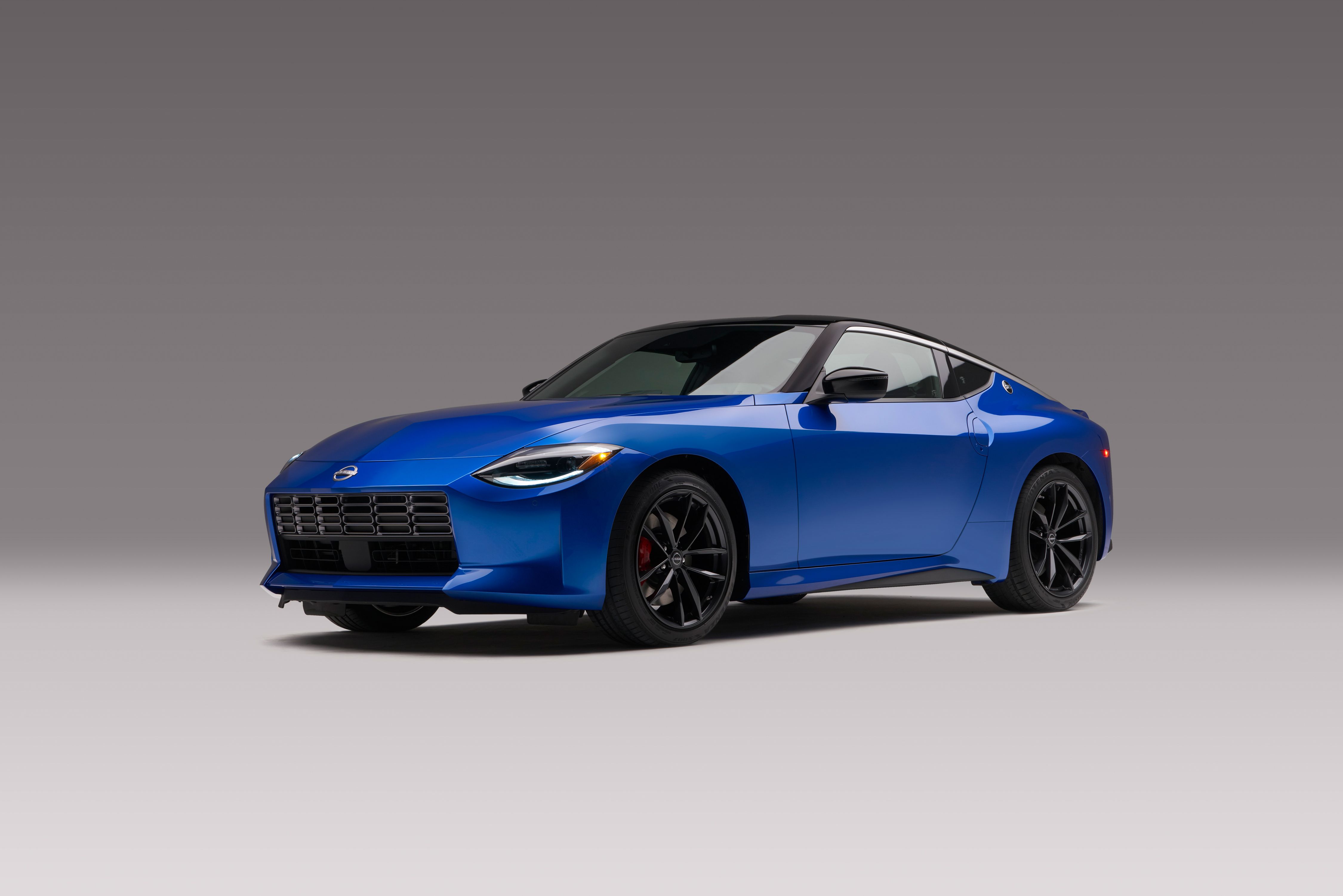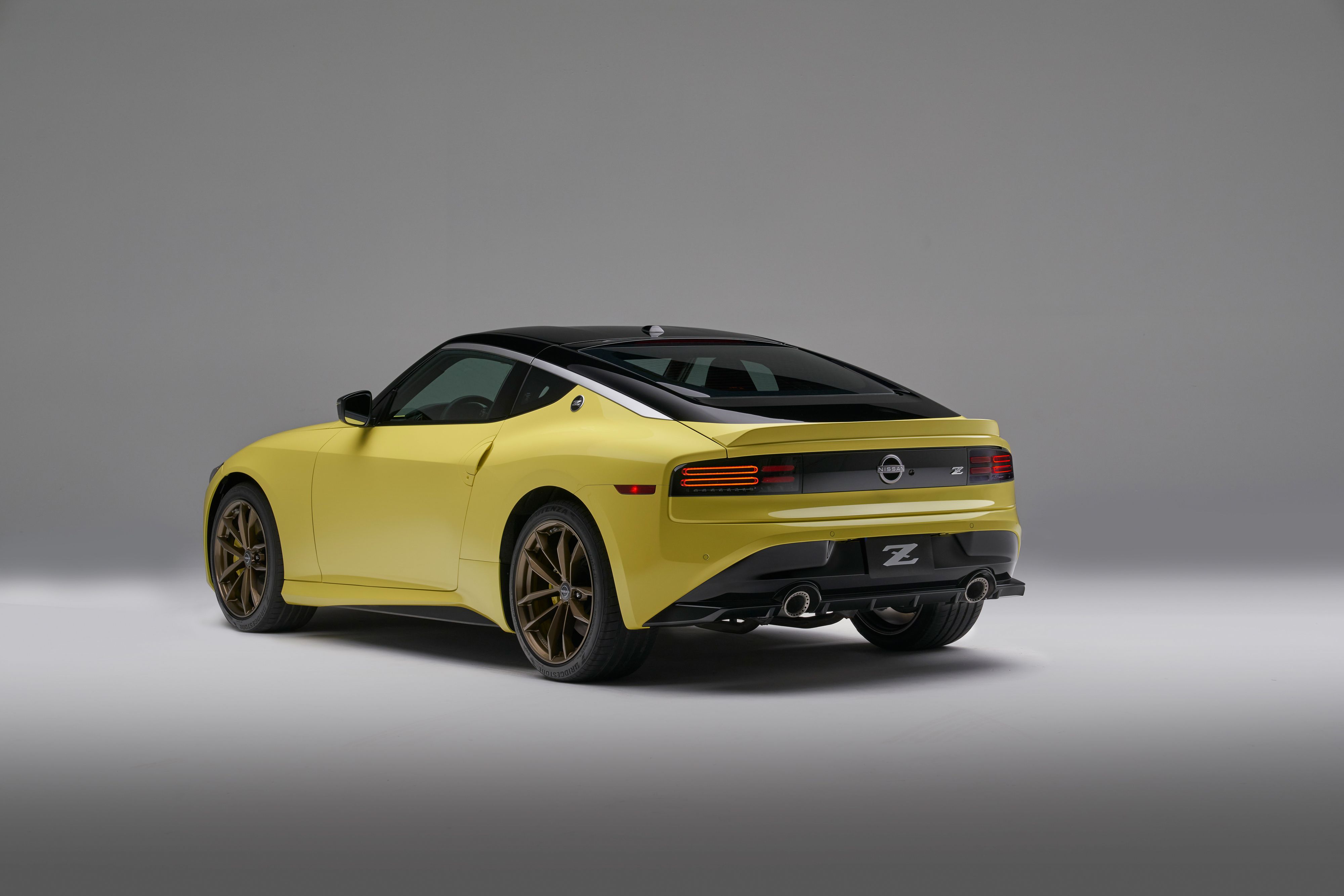It goes without saying that the Nissan Z is one of the most anticipated vehicles this year. The seventh generation of the Japanese performance coupe just made its official debut. The 2023 Nissan Z is the next chapter in the history of the Fairlady Z. With this in mind, let’s take a look at all those that came before it and trace the evolution of the iconic model.
Datsun Sports 1000 & 1500 Roadster (1959)
If we are talking about the Z’s history, it’s worth mentioning its predecessor. In the late 1950s Datsun (now, Nissan) made the 1000 Roadster – their first two-seater sports car. The lightweight car’s engine developed 61 horsepower (45 kilowatts) at 6,000 RPM and 61 pound-feet (83 Nm) at 4,000 RPM.
In Japan, the car was actually known as the Datsun Fairlady 1000. A year later – in 1960 – came a new 1.2-liter engine, but power remained the same. It wasn’t until the second generation’s arrival in 1963, a properly motivated version was introduced. It was the Datsun Sports 1500 and, as the name suggested, it featured a 1.5-liter inline-four engine with 85 horsepower. Thanks to the Sports 1500, Datsun established itself as a sports carmaker in North America.
The Sports 1500 was followed by the 1600 and later 2000, which developed 95 and 135 horsepower, respectively. A sports package was offered for 2000 that comprised of new twin carburetors and a more aggressive camshaft and brought power up to 150 horsepower. The Datsun Fairlady Sports was built until 1970, with around 40,000 units being made in total. All versions of the car weighed under 2,200 pounds (1,000 kg).
Datsun 240Z (1969)
This is where the Fairlady Z actually took form. The car was introduced in late 1969, as a 1970 model, and was Nissan’s answer to the Toyota 2000 GT. The JDM version featured an L20A engine that produced 130 horsepower (97 kilowatts), while the EU cars featured an L24 2.4-liter inline-six engine with two SU-type carburetors by Hitachi. It had a SOHC design and produced 161 horsepower (120 kilowatts) at 5,600 RPM, and 146 pound-feet (198 Nm) at 4,400 RPM.
US versions of the car featured the same L24 engine, but with 151 horsepower (112 kilowatts). L24-equipped vehicles were capable of 0 to 60 mph (97 km/h) in 7.8 seconds. Around 160,000 were produced between 1969 and 1973.
Fun fact: the Datsun 240Z is the first Japanese car to score a win in the World Rally Championship. It was at the 1971 Safari Rally, with E. Herrmann and S. Mehta, taking first and second place. Between 1970 and 1974 the 240Z had a great rallying career with many of its entries finishing with podiums.
Datsun Z432
There was also a version dubbed the Z432, which shared an engine with the Nissan Skyline 2000 GT-R. The 432 moniker came from the engine configuration, as the S20 engine had four valves per cylinder, three carburetors, and two camshafts. The 2.0-liter inline-six developed 160 horsepower (118 kilowatts) at 7,000 RPM and 130 pound-feet (177 Nm) at 5,600 RPM.
Datsun 260Z (1974)
The Datsun 260Z was actually a facelift of the 240Z. It was still the same S30 generation, but it had a bigger 2.6-liter inline-six engine. Power was now 154 horsepower (115 kilowatts) but most US states got a 139-horsepower (104 kilowatts) version, due to stringent emissions regulations. Lower compression, different carburetors, and a lazier camshaft were put in order for the car to comply with US regulations.
The Fairlady Z was always known as a two-seater sports car. But with the 260Z came a 2+2 version, which had rear seats and a 30 cm (one foot) longer wheelbase. In addition, the 2+2 cars had a roofline that ended more abruptly, compared to the two-seater’s fastback rear end.
Datsun 280Z (1975)
Not to be confused with the 280ZX that came after it. The 280Z was offered only for North America and was still based on the first-generation S30 model. However, it now featured a bigger 2.8-liter inline-six that dropped the SU carburetors in favor of Bosch fuel injection. Because of this power was now 170 horsepower (127 kilowatts) at 5,200 RPM. Peak torque was 144 pound-feet (195 Nm) at 4,400 RPM.
The car also grew in size and featured the obligatory for the U.S. ugly 5 mph bumpers. The 0 to 60 mph (97 km/h) time was still 7.8 seconds, for the manual, but the top speed was now increased to 130 mph (210 km/h).
Cars from 1977 and later, had the option of a new five-speed manual, space-saver spare tire, and a larger fuel tank, which robbed some cargo space. The car continued to have a short and long-wheelbase version. This is the last iteration of Fairlady Z’s first generation. Between 1969 and 1978, over 520,000 examples were sold globally.
Nissan 280ZX (1978)
The second generation of the Fairlady Z was introduced in 1978. Depending on the market, the car was called the Datsun 280ZX, Nissan Fairlady Z, or Nissan Fairlady 280Z. Internally, it was known either as the S130 or the Z30.
Once again, the car was offered as a two-seater or a longer 2+2 coupe. It also had a Targa version. The goal of the 280ZX was to be more of a comfortable cruiser than a sports car. It was a softer and heavier car. Initially, it was offered with an L20 and L28 normally-aspirated SOHC engines. The latter produced 137 horsepower (101 kilowatts) at 5,200 RPM and 144 pound-feet (195 Nm) at 4,400 RPM.
In 1981, a turbocharged version came out. The same 2.8-liter inline-six now made 180 horsepower (134 kilowatts) and 203 pound-feet (275 Nm).
In 1982, the 280ZX got a facelift. NACA ducts were added on the front hood and new alloy wheels were introduced – 14-inch six-spoke wheels for the normally-aspirated and 15-inch four-spoke wheels for the turbo variant. JDM cars came with an updated L20E engine, while export models got a revised L28 unit, now with 150 instead of 137 horsepower. The increased compression resulted in a 0 to 60 mph (97 km/h) time of 9.1 seconds.
The U.S.-spec Nissan 280ZX Turbo was offered with a Borg Warner T5 manual transmission, also used on the Ford Mustang and many GM F-body models. After 1983, Nissan phased out the use of non-Japanese automotive components, which meant that, for a time, the 280ZX Turbo was offered as an automatic-only. By 1983, the 280ZX Turbo developed 200 horsepower (147 kilowatts).
Nissan 300ZX Z31 (1984)
The 1984 modes are technically the last Datsun 300ZX cars, since, at that time, the company was officially renamed from Datsun to Nissan. During the same year, Nissan released a 50th Anniversary Edition. It was based on the Turbo, but featured every available option. It also had a unique black exterior, “bodysonic” leather seats, fender flares, unique badging, and 16-inch wheels. In 1985, all cars came with T-tops as standard. The Z31 300ZX underwent numerous improvements over its production run and in 1987, Turbo models got a limited-slip differential.
In 1988 revisions to the engine were made. Compression was raised from 7.8:1 to 8.3:1 and the Garett T3 was replaced with a T25 turbo, for better power delivery. Production finished the same year, with the “Shiro Special” (SS) version, which was offered only in pearl-white.
Nissan 300ZX Z32 (1989)
Even today The Z32 generation is a very sought-after Japanese sports car. It was described as low, wide, and modern, and even today most of it holds true. The 3.0-liter V-6 was, once again, offered in normally aspirated and turbocharged form. The engine now featured a DOHC design and had variable valve timing (VVT). Non-turbo variants made 222 horsepower and 198 pound-feet (268 Nm) ), and could reach 60 mph in 6.7 seconds.
The turbo variant featured twin Garett turbochargers, good for 300 horsepower and 283 pound-feet (384 Nm). Some publications reported a 0 to 60 mph (97 km/h) time of 5.0 seconds, with the manual gearbox, while the top speed was limited to 155 mph (250 km/h).
The Z32 also had a short two-seater variant and a 4.7 inches longer 2+2 version. In the U.K. and Europe, the 2+2 was offered only with the normally-aspirated engine. The Z32 was also among the first cars to be designed with CAD software. It also featured high-tech solutions like adjustable suspension and the super HICAS rear-wheel steering. In 1993, a soft-top convertible version was introduced.
Between 1989 and 1996, the 300ZX underwent significant improvements. Some of the main ones included upgraded injectors, electronic instead of hydraulic actuation for the HICAS rear-wheel-steering system, removal of the variable valve timing system due to emissions, upgrading from 8-bit to 16-bit ECU, and many others. In its seven-year production cycle, the Z32 was produced in 164,170 copies, of which 99,268 were exported.
Nissan 240Z Concept
Nissan didn’t give us any Z-cars between 1997 and 2002, but there was an interesting concept, inspired by the first-generation model. At the 1999 North American International Auto Show, they unveiled the 240Z Concept – an orange, retro-futuristic two-seater coupe that showed us what a potential Fairlady Z successor might look like.
It was a fully-functioning concept, equipped with a 2.4-liter KA24DE inline-four unit that made 200 horsepower and 180 pound-feet (244 Nm). Due to the lack of a six-cylinder engine, the concept was deemed an unworthy successor and was never produced.
Nissan 350Z Z33 (2002)
That 1999 concept we mentioned eventually paved the way for a proper successor – enter the 350Z. The model was actually part of Renault’s project for dragging the Japanese brand out of financial difficulties. The VQ35DE engine would go on to become a capable platform. Initially, developing 287 horsepower and 274 pound-feet (373 Nm).
In 2007, the engine was replaced by a VQ35HR – a high-rev version of the same engine now producing 306 horsepower and 268 pound-feet (368 Nm). Equipped with the six-speed manual, the car could hit 60 mph (97 km/h) in around 5.2 seconds. Cars featuring the high-rev engine feature a bulge on the hood, reminiscent of the original 240Z.
Nissan 350Z NISMO (2007)
A NISMO variant was available between 2007 and 2008. It was powered by the VQ35HR engine and was available only with the six-speed manual. The NISMO also had a viscous limited-slip differential and a chassis, reinforced by Autech.
The car also featured a NISMO-tuned suspension and bigger Brembo brakes – 330 mm front and 320 mm rear. The cars also featured an aggressive body kit with a big rear diffuser, lower front fascia, and a big rear wing. NISMO-branded forged RAYS wheels and a new exhaust was added as well.
NISMO 380RS (2007)
The 380RS was essentially a 350Z that used the engine of the Super GT 380RS Competition car. Only 300 cars were produced. The engine was de-tuned from 400 to 350 horsepower, while the torque was rated at 293 pound-feet (397 Nm). The road-going 380RS features revised suspension and chassis, bigger Brembo brakes, and forger RAYS wheels. The car was able to reach from 0 to 60 mph (97 km/h) in 4.6 seconds, on its way to 175 mph (282 km/h).
Nissan 370Z (2008)
The NISMO version adds a sportier body kit, different wheels, and more power – 355 horsepower and 271 pound-feet (373 Nm), to be exact. Whilst the regular 370Z offered a choice between a six-speed manual, or a seven-speed Jatco automatic, the NISMO came with a manual only.
In 2013, the model receives a facelift. New LED lights were positioned vertically on the front bumper and new wheel designs are added. The car was produced until 2020 until it was discontinued. The roadster was axed a year before, in 2019.
Nissan Z (2021)
As good as the 370Z is, Nissan really should have retired it. Now that they did, the next chapter in Z history is on its way. The new Nissan Z has just been unveiled, in front of the world, and it is exactly what we were hoping for.
The new Z will is a retro-inspired two-seater that offers, arguably, the best “bang for the buck”. A starting price of under $40,000 and a twin-turbo V-6 that pumps out 400 horsepower and 350 pound-feet (475 Nm) are strong arguments. You can also have it with a six-speed manual, which is not something many other carmakers can say. In any case, Nissan’s Z continues to live and this latest generation is forming up to be the most exciting of them all.

